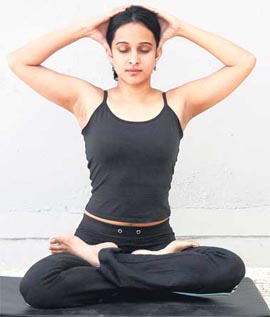|
Whenever we encounter a stressful event, our bodies undergo a series of hormonal and biochemical changes that put as in ‘alarm mode.’ Our heart rate increases, adrenaline rushes through our blood stream, and our digestive and immune systems temporarily shut down. If the stressors continue and we stay on high alert for a prolonged period of time, we experience exhaustion and burn out. None of us can avoid stress, but we can return to a state of balance and regulation through a variety of means, including deep breathing, meditation, yoga, and exercise. These activities provide calming and relaxing sensory input for stress relief and can be selected according to lifestyle and preference.
 |
How do breathing exercises relieve stress?
When you’re facing a stressful situation, you can reduce your stress simply by deep breathing. Deep breathing involves not only the lungs but also the abdomen. To experience abdominal breathing, sit comfortably with your back straight. Put one hand on your chest and the other on your stomach. Inhale through your nose and the hand on your stomach should begin to rise. Your other hand should move very little. Exhale as much air as you can while contracting your abdominal muscles. Once again, the hand on your stomach should move in as you exhale, but your other hand should move very little.
If you have a hard time breathing from your abdomen sitting up, lie on the floor, put a small book on your stomach, and try to breathe so that the book rises as you inhale and falls as you exhale. Breathing techniques can be practised almost anywhere and can be combined with other relaxation exercises, such as aromatherapy and music. All you really need is 10 minutes a day and a place to stretch out.
What can meditation do to relieve stress?
When you meditate you bring together all of the mind’s energies and focus them on a word, a sound, a symbol, a comforting image, or your own breathing. The optimal setting for meditation is a quiet, clean place. People typically meditate sitting on the floor or in a chair with their eyes closed.
Meditation involves both effort and passive participation. It takes effort to bring your attention back to your chosen focus but you also become simply a witness to everything that happens: random thoughts, sensory input, body sensations, such as itches and cramps and external stimuli. As a result, you incorporate them into the meditation experience. All meditation practices involve the development of mindfulness — being fully engaged in whatever is happening in the present moment, without analysing or otherwise “over-thinking” the experience.
A variation of traditional meditation involves guided imagery or visualisation. If you use this method, you’ll imagine a scene in which you feel at peace, able to let go of all concerns and tensions. In guided imagery, audio instructions help you visualise the scene, focus your thoughts and relax.
You don’t have to be seated or still to meditate. In walking meditation, mindfulness involves being focused on the physicality of each step — the sensation of your feet touching the ground, the rhythm of your breath while moving, feeling the wind against your face.
|
|